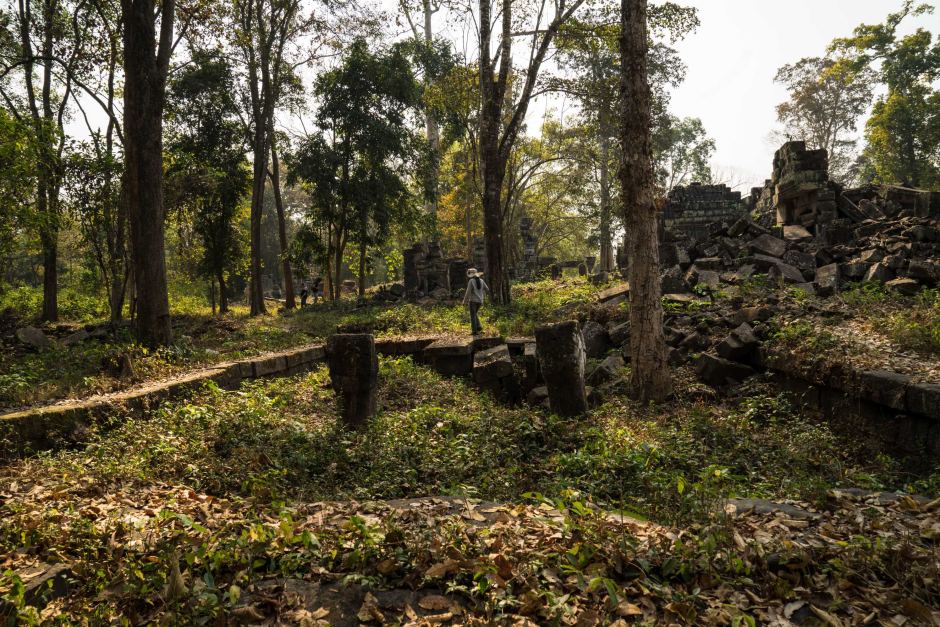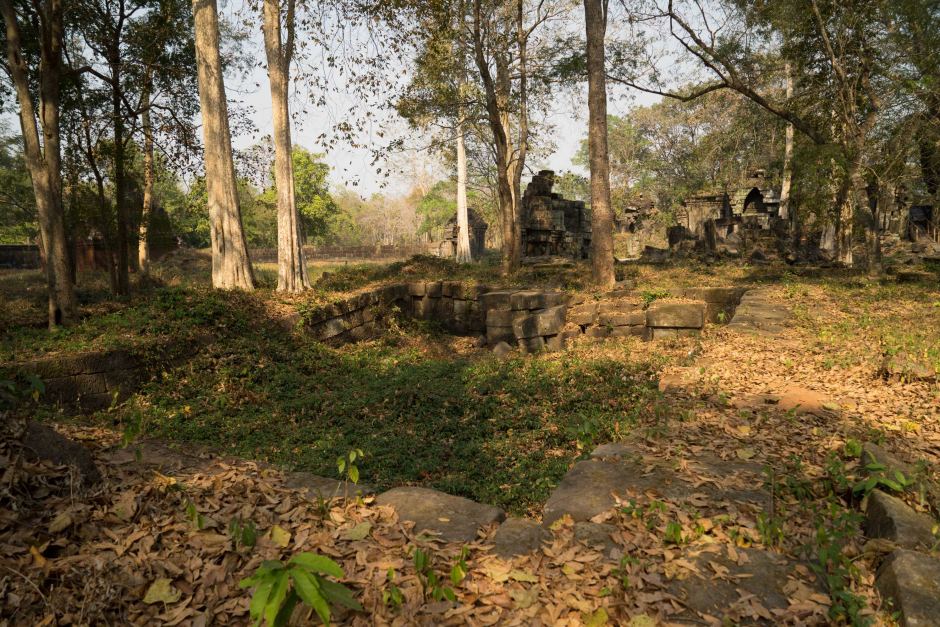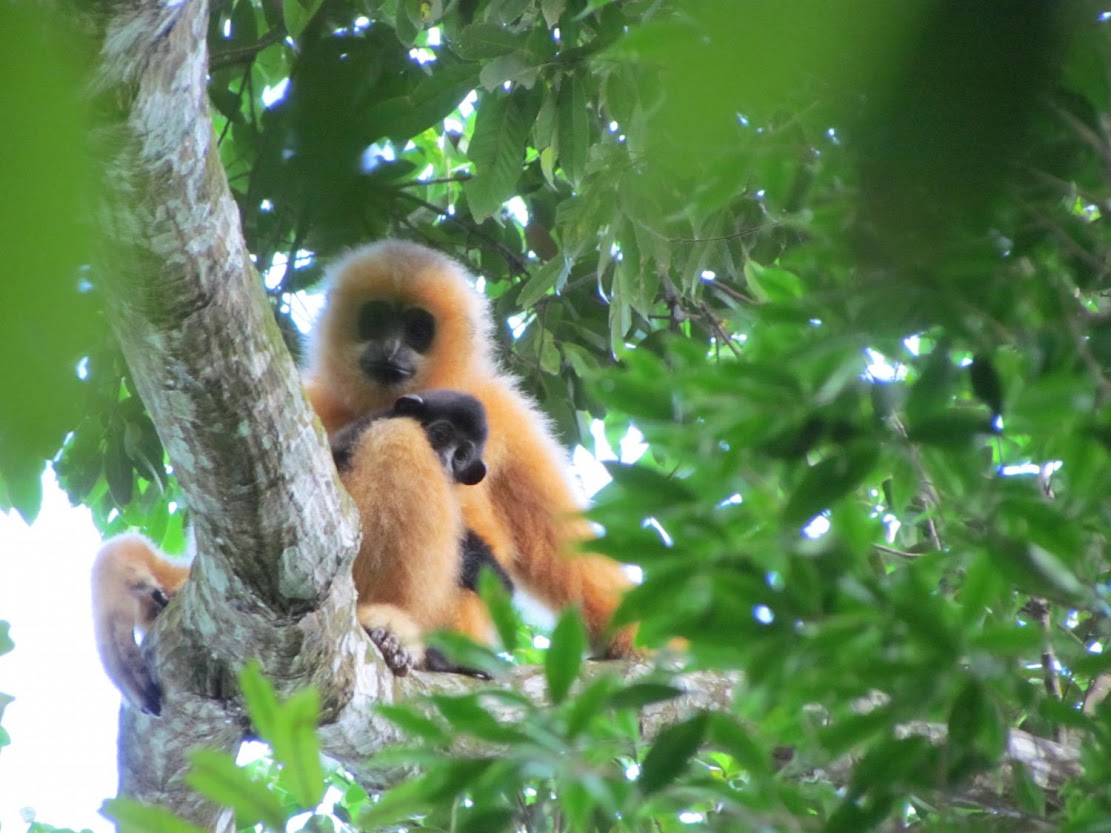Unprecedented new details of medieval cities hidden under jungle in Cambodia near Angkor Wat have been revealed using lasers, archaeologists said Sunday, shedding new light on the civilisation behind the world's largest religious complex.

northwest of the capital Phnom Penh, Cambodia [Credit: AP Photo/Heng Sinith]
While the research has been going on for several years, the new findings uncover the sheer scale of the Khmer Empire's urban sprawl and temple complexes to be significantly bigger than was previously thought.
The research, drawing on airborne laser scanning technology known as lidar, will be unveiled in full at the Royal Geographic Society in London on Monday by Australian archaeologist Damian Evans.
"We always imagined that their great cities surrounded the monuments in antiquity," Evans told AFP.

vegetation, showing topographic relief [Credit: Damian Evans/CALI]
"But now we can see them with incredible precision and detail, in some places for the very first time, but in most places where we already had a vague idea that cities must be there," he added.
Angkor Wat, a UNESCO World Heritage site seen as among the most important in southeast Asia, is considered one of the ancient wonders of the world.
It was constructed from the early to mid 1100s by King Suryavarman II at the height of the Khmer Empire's political and military power and was among the largest pre-industrial cities in the world.

[Credit: Francisco Goncalves/CALI]
But scholars had long believed there was far more to the empire than just the Angkor complex.
The huge tranch of new data builds on scans that were made in 2012 that confirmed the existence of Mahendraparvata, an ancient temple city near Angkor Wat.
But it was only when the results of a larger survey in 2015 were analysed that the sheer scale of the new settlements became apparent.

[Credit: Damian Evans/CALI]
To create the maps, archaeologists mounted a special laser on the underneath of a helicopter which scans the area and is able to see through obstructions like trees and vegetation.
Much of the cities surrounding the famed stone temples of the Khmer Empire, Evans explained, were made of wood and thatch which has long rotted away.
"The lidar quite suddenly revealed an entire cityscape there with astonishing complexity," he said.

[Credit: Francisco Goncalves/CALI]
"It turned out we'd been walking and flying right over the top of this stuff for ten years and not even noticing it because of the vegetation."
Among the new scans already published are a detailed map of a huge city complex surrounding the stone temple known as Preah Khan of Kompong Svay, a series of iron smelting sites dating back to the Angkor era and new information on the complex system of waterways that kept the region running.
The new data also maps out the full extent of Mahendraparvata, information that will make future digs much more accurate and less time consuming.

"What we had was basically a scatter of disconnected points on the map denoting temple sites. Now it's like having a detailed street map of the entire city," Evans said.
Further maps will be published in the coming months, he added.
Long Kosal, a spokesman for the Apsara authority, the government body that manages the Angkor complex, said the lidar had uncovered "a lot of information from the past."

guided by lidar imagery [Credit: Damian Evans/CALI]
"It shows the size and information about people living at those sites in the past," he told AFP, adding further research was now needed to capitalise on the finds.
While the Khmer Empire was initially Hindu it increasingly adopted Buddhism and both religions can be seen on display at the complex.
Angkor is visited by hundreds of thousands of visitors a year and remains Cambodia's top tourist attraction.
For more information see the >Cambodian Archaeological Lidar Initiative website.
Author: Suy Se | Source: AFP [June 12, 2016]





























![The AquaDom [Berlin, Germany]](https://blogger.googleusercontent.com/img/b/R29vZ2xl/AVvXsEhW2B8LuyViolNlc0d-M9hTupg5vH-t2xcS5OoOtNqUT4Q95Gcfq3vVq3khZdhH0SO19NCUvBmguRFiOnaFmmTKeAtCJd6QfRr8q7xXwLGj-SMjbj0ntAtXtpgfYUJGyZmmpoFqQcPwXrk/s1600-rw/Radisson-SAS-Hotel.jpg)